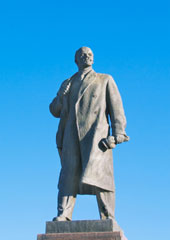America’s 1% Vs. the Globe’s 1.3 Billion
Do the world’s poorest 1.3 billion people earn more income than the richest 1% of Americans?
October 29, 2012
1. Yes, it’s the top 1% — the very same top 1% that has been the focus of the Occupy Wall Street’s ire, but this time in an even more staggering global context.
2. The top 1.1% of Americans — a little over three million people living in the richest U.S. households — had per capita incomes of about $180,000, after taxes, in 2008. As a group, they earn almost exactly $600 billion a year.
3. The $600 billion of income of the three million richest Americans (the top 1.1%) exactly matches the total income of the world’s poorest 1.3 billion people.
4. Those 1.3 billion people outnumber the richest Americans by a factor of more than 430 to one.
5. Those 1.3 billion people accounted for just under 20% of the world population in 2008 — and were equal in number to the entire population of China.
6. The top 3% of Americans had per capita incomes of $125,000 in 2008. As a group, their total income was $1.1 trillion — almost twice as much as the combined income of the world’s poorest 1.3 billion people.
7. The top 5% of Americans had average after-tax incomes of just over $100,000 in 2008. (Note that these are the richest 5% of Americans measured by their household income, which obviously includes many children whose incomes are zero. This means not only that they live in wealthy households, but that their parents make multiples of the per capita figure of $100,000 a year.)
8. The total income of the 5% of richest Americans was $1.6 trillion. That was almost three times the combined income of the world’s poorest 1.3 billion people.
9. The richest 10% of Americans, measured in terms of household income, is a group of a little over 30 million people. In 2008, they had an average incomes of just over $80,000 on an after-tax basis. As a group, they made almost $2.5 trillion.
10. Thus, the total income of the richest 10% of Americans was more than four times the total annual income of the world’s poorest 1.3 billion people — even assuming they all lived exactly at the very upper edge of the absolute poverty line of $1.25 per day, which many of them do not.
Editor’s note: This feature is based on calculations by Branko Milanovic, lead economist in the World Bank’s Research Department. He is the author of The Haves and the Have-Nots: A Brief and Idiosyncratic History of Global Inequality.
The data are for 2008, the last year for which internationally comparable data are available, and are expressed in terms of purchasing power parity.
Author
The Globalist
Read previous

Will the Russian Empire Be Reborn?
October 27, 2012